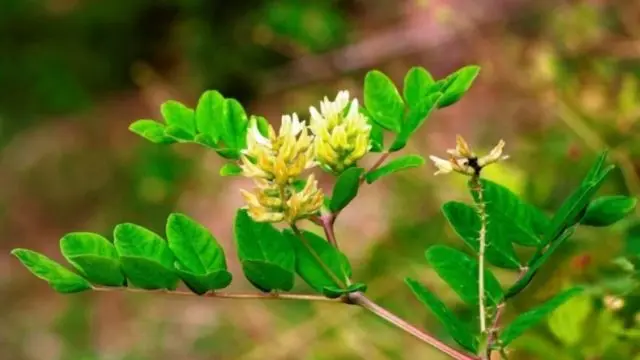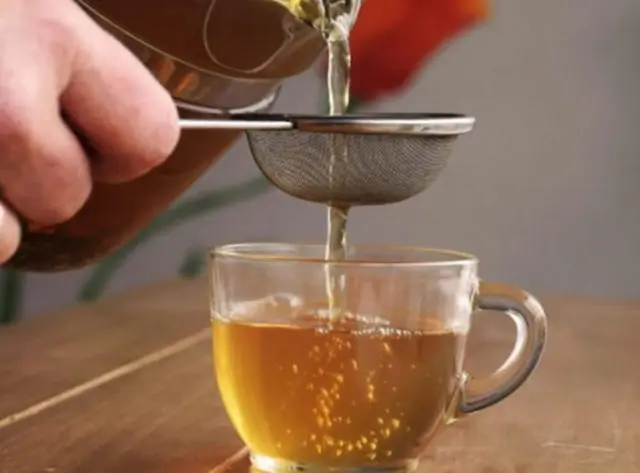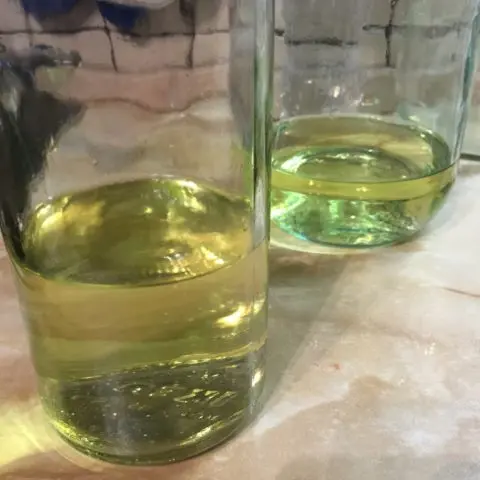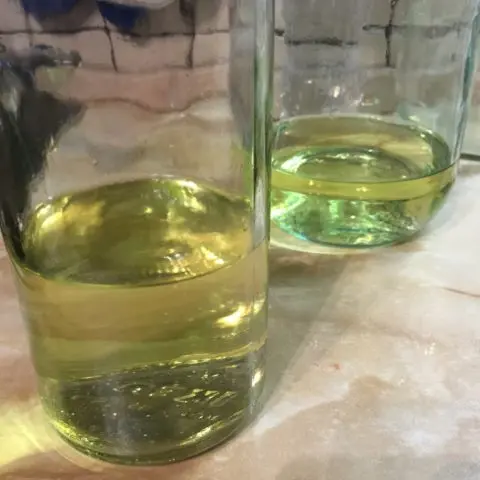Contents
Licorice Astragalus (Astragalus glycyphyllos) is a perennial herbaceous crop, which is one of the representatives of the legume family. Its value is that it has healing properties and helps in the treatment of many diseases. But for the plant to really be useful, it must be used correctly and the existing contraindications taken into account.

Astragalus licorice has a characteristic odor and bitter taste.
How it looks and where it grows
Astragalus licorice, as seen in the photo, is a herbaceous culture with a lying shoot, the length of which reaches 1-1,5 m. Their surface is slightly pubescent. It branches out at the bottom.
The leaves of astragalus licorice consist of a pair of stipules with a sharp tip. They can be green or yellowish. The plates of the plant are complex, they contain 4-7 pairs of separate segments of an oval-oblong shape. Their length varies within 1,8-4 cm, and their width is no more than 2 cm. They are attached to one common petiole about 20 cm long.
Peduncles appear from the leaf axils, on which several inflorescences subsequently form, consisting of moth-type flowers, which is inherent in all representatives of the legume family. The corolla has a greenish-yellow hue. The sail reaches a length of no more than 15 mm. It is connected to the nail up to 4 mm. The flower boat grows no more than 11,5 mm, it has a plate with a pronounced hump and is equal in size to a nail, or may be slightly shorter.
The bracts of astragalus licorice are white-membranous, they have subulate teeth. They are practically inseparable from the corolla. In the center of each flower is a finely fibrous or naked ovary, which is located on a short style.
The fruits of astragalus licorice are simple beans that stick up in bunches. They are sickle shaped. Inside are numerous brownish seeds, which are located on a white bed with a slight pubescence.
The flowering period of astragalus licorice begins in June and lasts until August. Fruit ripening occurs in September-October. Astragalus licorice propagates by seeds.

Another name for astragalus licorice is Bogorodskaya grass
This perennial prefers sandy and loamy soils rich in humus with a neutral level of acidity. Astragalus licorice is a shade-loving plant, so it can be found under the canopy of trees and shrubs, where usually the soil is always slightly moist. It can also be found in meadows, in floodplains, in pine forests and at the edge of oak forests.
Distribution locations:
- All regions of Our Country, except for the Karelian-Murmansk and Dvinsko-Pechora regions.
- Ukraine.
- Belarus.
- Moldova.
- Caucasus.
In the world, it is found in the countries of Western Europe and Asia Minor.
Chemical composition
Astragalus licorice contains a large number of useful substances for human health. Its chemical composition is very diverse, which allows the aerial part to be used for medicinal purposes.
Astragalus licorice contains the following components:
- vitamins of group B, C;
- flavonoids;
- saponins;
- organic acids;
- alkaloids;
- tannins;
- polysaccharides;
- micro and macro elements;
- rutin;
- essential oils.
This combination of nutrients makes it possible to use the plant to treat many diseases and maintain the vitality of the body.

The plant improves insulin sensitivity
Medicinal properties of astragalus licorice
The healing properties of astragalus licorice are widely used in folk medicine. The plant helps to strengthen the human immune system. Also, its use allows you to activate your own defenses, which significantly speeds up recovery.
The main healing properties of this plant:
- has an antiviral effect;
- slows down the growth of malignant tumors;
- improves sputum discharge;
- It strengthens the immune system;
- normalizes metabolic processes;
- promotes the elimination of toxins from the body;
- normalizes blood pressure;
- has a labor-stimulating effect, accelerates the separation of the placenta.
Astragalus licorice is known to have a calming effect on the central system, so it is widely used for various neuroses.
The plant is recommended for such health problems:
- hypertension;
- ischemic disease;
- the initial stage of heart failure;
- atherosclerosis;
- pyelonephritis;
- cystitis;
- urolithiasis disease;
- venereal diseases;
- epilepsy;
- flatulence;
- white;
- gastroenteritis.
The culture can be used for douching in the treatment of inflammatory processes in the female reproductive organs.
Application in folk medicine
The plant is widely used in folk medicine. On the basis of astragalus licorice, decoctions, infusions, teas and tinctures are prepared, which can be used for oral and external use.
Cooking recipes:
- Infusion. This remedy should be prepared at night so that it can be taken in the morning. For preparation, it is necessary to fill a thermos with 50 g of raw astragalus and pour 500 ml of boiling water. Leave for 10 hours, then peel. Take 2 sips three times a day. The course of therapy is 14 days. The infusion is recommended for violations of the digestive system, as a general tonic, for women’s diseases.

- Decoction. To prepare the product, it is necessary to pour 20 g of astragalus licorice into 250 ml of water and boil for 30 minutes using a water bath. Then cool and bring the total volume of liquid to the original, clean. The decoction is recommended for rinsing the mouth with stomatitis, as a compress for the treatment of skin diseases, as well as douching. The duration of therapy is 14 days.

- Tincture. Pour dried parts of astragalus licorice into a glass container and pour vodka in a ratio of 1 to 3. Leave the mixture in the dark for 2 weeks, shaking occasionally. Clear at the end of the waiting period. Take 10-30 drops daily before meals, previously dissolved in 100 ml of water. The course of treatment is 10 days, and then take a break for a week. The tincture is recommended for atherosclerosis and arrhythmias.

- Cool tea. Brew 30 g of medicinal raw materials of astragalus licorice in 300 ml of boiling water, cool to a warm state. Drink 100 ml three times a day. Honey can be added to improve the taste. Tea is recommended to relieve swelling, strengthen immunity. Treatment is carried out once, if necessary.

Противопоказания
Despite the beneficial properties of astragalus licorice, in some cases it can be harmful to health.
Main contraindications:
- pregnancy;
- age of 14 years;
- serious violations of the heart muscle;
- individual intolerance to the component.
It is necessary to use folk remedies based on astragalus licorice with caution in diabetes mellitus. Therefore, you should initially start with small doses and only gradually increase to the standard rate. In case of deterioration of health, the reception should be discontinued.
Collection and Procurement
For medicinal purposes, shoots and leaves of astragalus licorice are used. The collection of medicinal raw materials must be carried out in June-July, during the period of active vegetation and flowering before the formation of fruits. Shoots should be cut at a height of 5-7 cm from the ground.
After that, the raw materials must be dried in a dry, dark place, excluding direct sunlight. To preserve the number of astragalus licorice during harvesting, it is necessary to leave several specimens for seed maturation. Also, for these purposes, it is impossible to harvest raw materials at the same place every year.
The dried herb of astragalus licorice must be crushed and stored in a closed glass container or in linen bags. Shelf life – 2 years.
Conclusion
Astragalus licorice is a valuable medicinal plant, which, subject to the rules for the use and procurement of raw materials, can bring health benefits. This culture is not yet in demand in traditional medicine, since its properties have not been fully studied. It is also grown in many countries as a pasture plant for animal feed.













